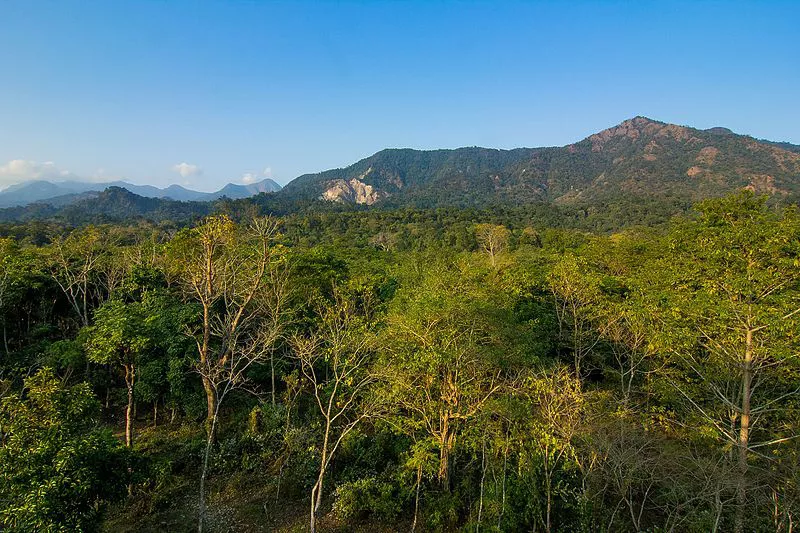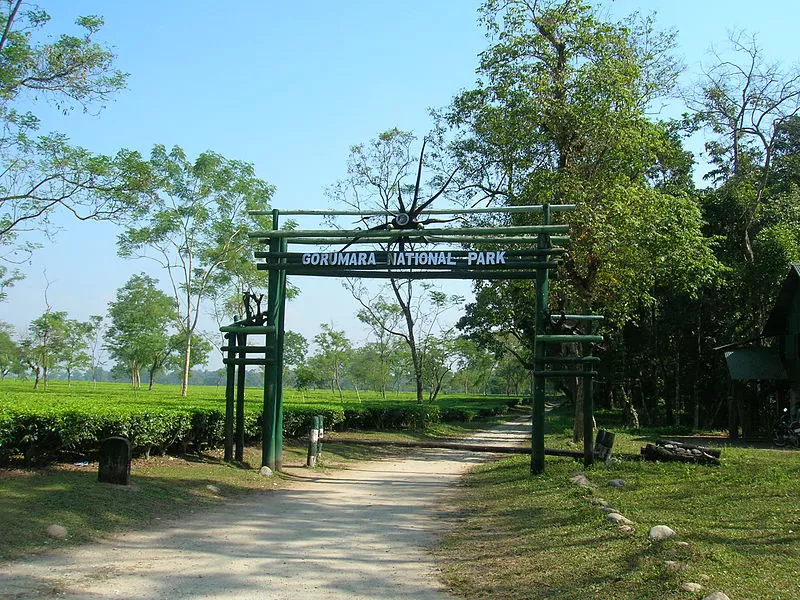

The Dooars or Duars are the alluvial floodplains in northeastern India that lie south of the outer foothills of the Himalayas and north of the Brahmaputra River basin. This region is about 30 km (19 mi) wide and stretches over about 350 km from the Teesta River in West Bengal to the Manas River in Upper Assam. The entire area is dotted with National Parks and Wildlife Sanctuaries from The Manas National Park in the east to Gorumara National Park in the west. This region is also famous as it lies in the animal corridor linking the forest Terai plans of Nepal with the grasslands of Assam.
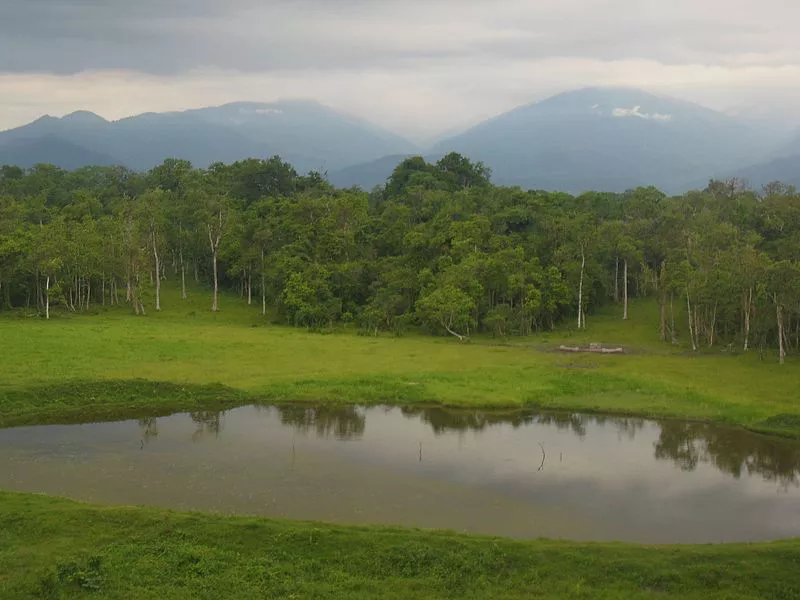
Chapramari is essentially an extension of Gorumara National Park - the two are actually divided by the Murti River. In fact Chapramari is bounded on its west by Murti River and on its east side by Jaldhaka River. Although this is a relatively small forest (about 10 square kms in area), it's one of the oldest in Dooars. In 1895 it was first recognized as a forest reserve due to its diversity in flora & fauna. Subsequently in 1998 it became a wildlife sanctuary. The name Chapramari originated from a type of fish known as 'Chapra' that are found in abundance here ('mari'). The sanctuary is closed in the monsoon months.
Jaldapara National Park is situated at the foothills of the Eastern Himalayas in Alipurduar District of northern West Bengal and on the banks of the Torsa River. Jaldapara is situated at an altitude of 61 m and is spread across 216.51 km2 of vast grassland with patches of riverine forests. It was declared a sanctuary in 1941 for protection of its great variety flora and fauna. Today, it has the largest population of the Indian one-horned rhinoceros in the state, an animal threatened with extinction; The nearby Chilapata Forests is an elephant corridor between Jaldapara and the Buxa Tiger Reserve.
Read blog post: Encounter Indian one-horned rhinoceros at Jaldapara National Park
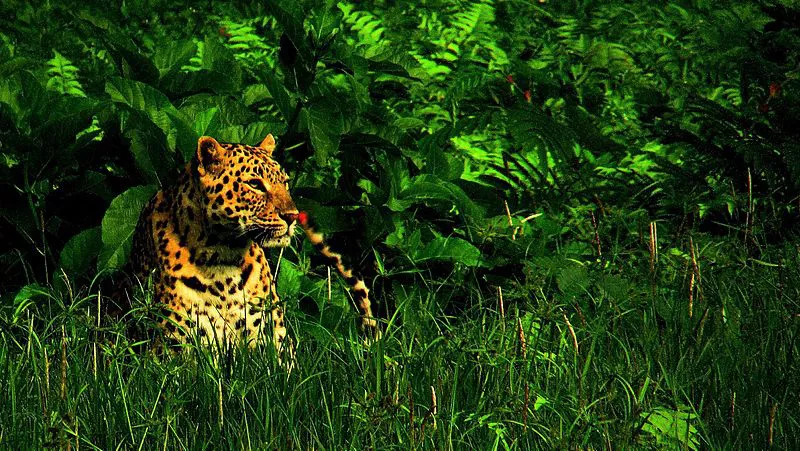
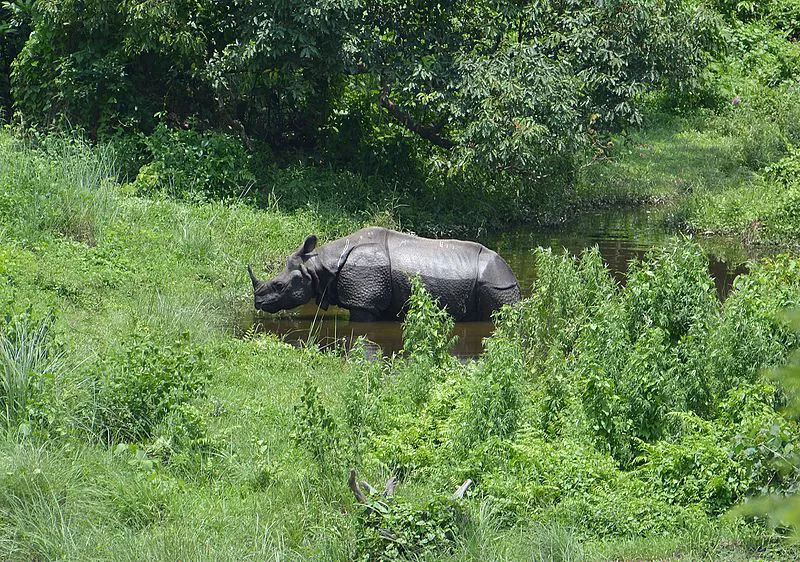
Gorumara National Park is a National Park in northern West Bengal, India. Located in the Dooars region of the Himalayan foothills, it is a medium-sized park with grasslands and forests. It is primarily known for its population of Indian rhinoceros. The park has been declared as the best among the protected areas in India by the Ministry of Environment and Forests for the year 2009. The park is closed in the Monsoon season from 16 June to 15 September. The best time to visit Gorumara is from November to March. A visit to Budhuram Forest Village in the evening for ethnic dances and visit the Lataguri Nature Interpretation Center is also recommended.
Read blog post: Visit Gorumara National Park - One of the best-protected areas
Buxa Tiger Reserve is a tiger reserve in northern West Bengal, India, covering an area of 760 km2. In altitude, it ranges from 60 m in the Gangetic Plains to 1,750 m bordering the Himalayas in the north. At least 284 bird species inhabit the reserve, along with mammals like the Asian elephant, gaur, Sambar deer, clouded leopard, Indian leopard, and Bengal tiger. Local people living in 37 villages inside the reserve depend on the collection of non-timber forest products. The fragile "Terai Eco-System" constitutes a part of this reserve. The Phibsoo Wildlife Sanctuary of Bhutan is contiguous to the north of Buxa Tiger Reserve. Manas National Park lies on the east of Buxa Tiger Reserve. Buxa Tiger Reserve, thus, serves as an international corridor for Asian elephant migration.
Read blog post: The Buxa Tiger Reserve the second highest tiger reserve in West Bengal
